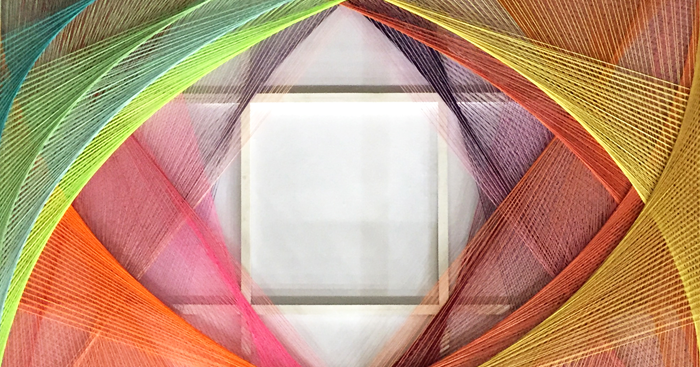
HOTTEA: How a Passion for Impermanence Led to a New Street Art Perspective
Published May 3rd, 2017 by Juleana Enright
We caught up with the internationally acclaimed street artist HOTTEA to talk about his career, his influences, and the philosophy behind all that yarn.
Travel back nearly a decade to the streets of Minneapolis; if you saw brightly colored yarn entwined onto fences, you knew exactly the mastermind behind it: HOTTEA. Still known to many Minneapolites as “the yarn guy,” local artist Eric Rieger, aka HOTTEA, was captivated by the unbridled energy and chaotic essence of street art. Though after a bout with the law for producing what is still deemed illegal artwork, HOTTEA became drawn to more impermanent projects which harnessed a non-destructive take on street art using skeins of yarn.
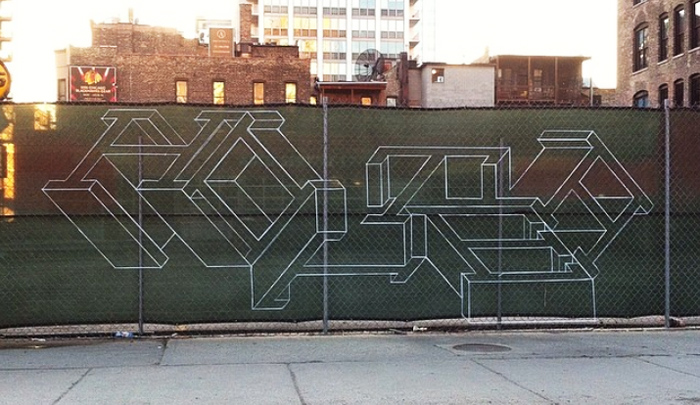 Yarn installation, NYC. 2014. Photo courtesy the artist’s Instagram.
Yarn installation, NYC. 2014. Photo courtesy the artist’s Instagram.
Incorporating a skill and love for typography with weaving techniques, HOTTEA introduced the MPLS scene to what is now a ubiquitous artform that’s paved the way for a sub-genre of “yarn bomb” artists. His signature “fencework” weaves words and images into nail-studded light poles and chain link fences. By connecting the dots, working the angles, and playing with shadow elements, HOTTEA created attention and dialogue around yarn as a street art medium. This was not your grandmother's craft night; this was about bringing awareness, emotion, and perspective into a street style that's often gotten a bad rap, a medium that’s seen less for its artistic voice and more as a societal nuisance. For HOTTEA, it became more than just a tag. Within the elaborate techniques, there was a link tied to his family’s culture of weaving, passed down for generations. In its vivid hues and dimensional framework, there existed a softer element not present with many graffiti artists. Pool these ingredients together and you have an artist who helped changed the way street art is made and viewed, adding an impassioned, lasting memory to an ephemeral art form.
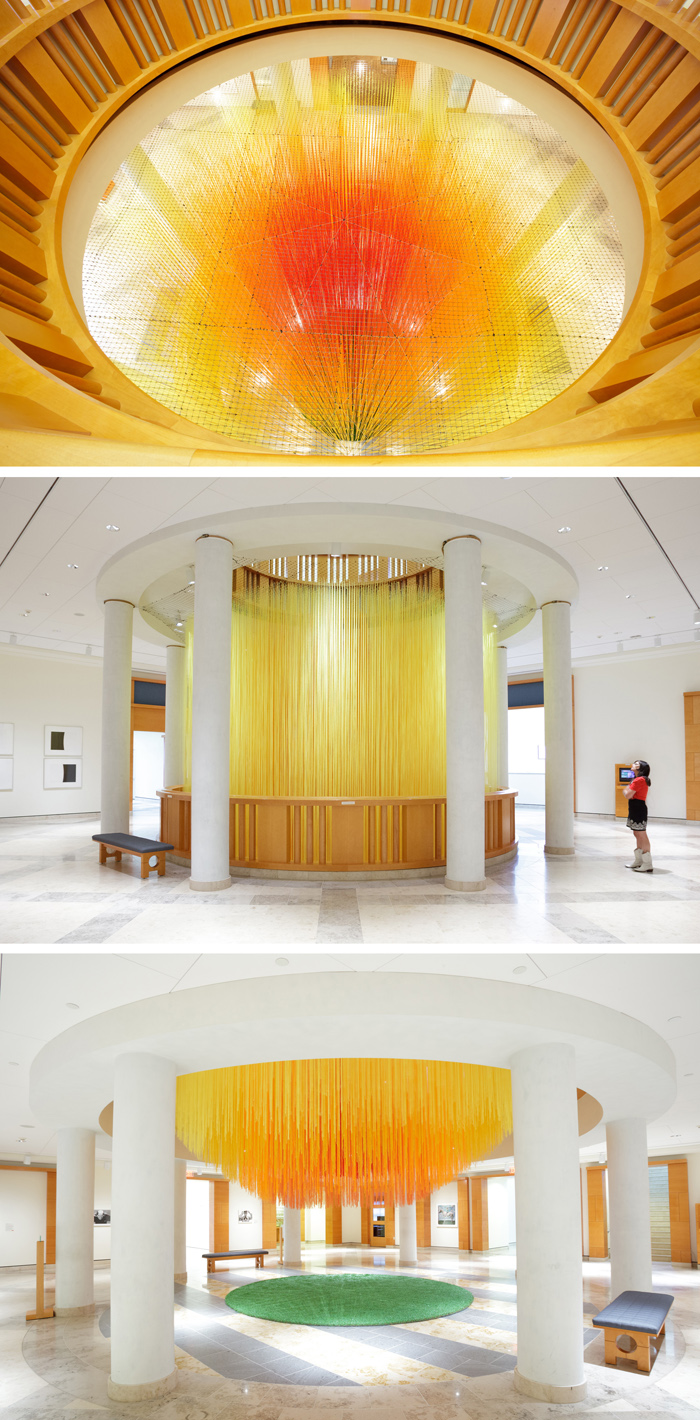 Letting Go, yarn installation at Mia, 2012
Letting Go, yarn installation at Mia, 2012
We recently caught up with the now critically acclaimed installation artist to chat about his national and international visibility, his collaboration with sparkling water giant Perrier, and the future of yarn art.
JE: It's been a few years since MPLSArt has checked in with you (our last interview was way back in 2011), so we have a lot to catch up on. Let's start with your most recent endeavors. This year, Perrier launched ARTXTRA, a program through which the company collaborates with innovative artists. From the final three artists selected by a panel of experts, you won the popular vote to be the artist who reimagines and designs a series of limited edition Perrier bottles and cans. What are the challenges of designing within the confines of 2D Art when the vast majority of your visual aesthetic is in a 3D context, specifically yarn?
HOTTEA: It’s different, but it’s also similar in a lot of ways. I adapt the patterns and shapes I use from my isometric lettering and translate it to the shape of the can. The fences that I do are all on a flat surface, and I come from a design background, so this project brought me back to what I used to do as a graphic designer.
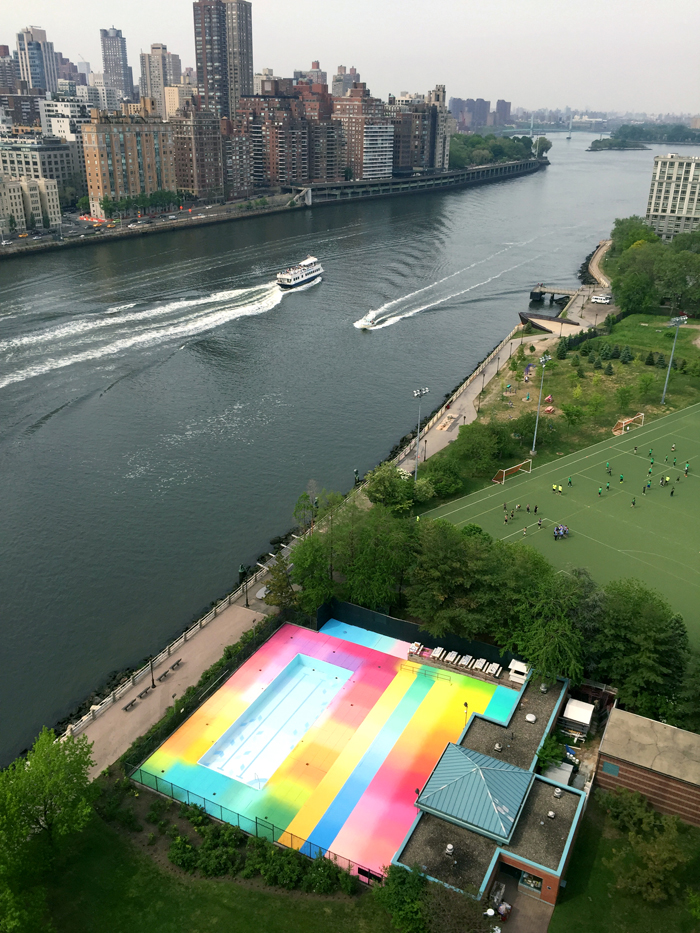 Asylum, painted installation on Roosevelt Island, NYC, 2015
Asylum, painted installation on Roosevelt Island, NYC, 2015
JE: A recent trend is companies partnering up with artists to showcase their work. Many Twin Cities breweries team up with local illustrators and graffiti artists to design unique artwork for their cans and taproom murals. PBR has a national Art Showcase contest that has given their brand visibility in the art scene. With the current political climate and the national funding for the arts being called into question, do you think continuing to establish these types of partnerships could be the financial answer to the future of the arts?
HOTTEA: As an artist it is our responsibility to make sure we are smart about how we conduct our business. Many artists forget about the business side of this world. At the end of the day, someone either has to commission your work or buy a piece of art in order for you to live to work. There will always be people who buy or commission art, but it is the artist’s responsibility to find and keep those opportunities consistent with their art and business skills.
JE: Back in 2011 when we interviewed you, the New York Times was predicting that guerrilla art, specifically 'craftivism' like the HOTTEA project, "could become as potent a social movement as urban farming." Do you think graffiti knitting has continued on this projection? How has the insurgence of yarn artists and the popularity of yarn bombing influenced your work?
HOTTEA: I don’t believe it has consciously influenced my work. The things that I look to for inspiration are personal moments with my family and other people and mostly how we interact with each other and space. I am very interested in how we function emotionally as people and how we portray ourselves to the masses. HOTTEA has always been about taking two or more things and finding common ground between them - whether it be a space or idea. I find myself more inspired and influenced by the writings and findings of Freud than I am actual artwork.
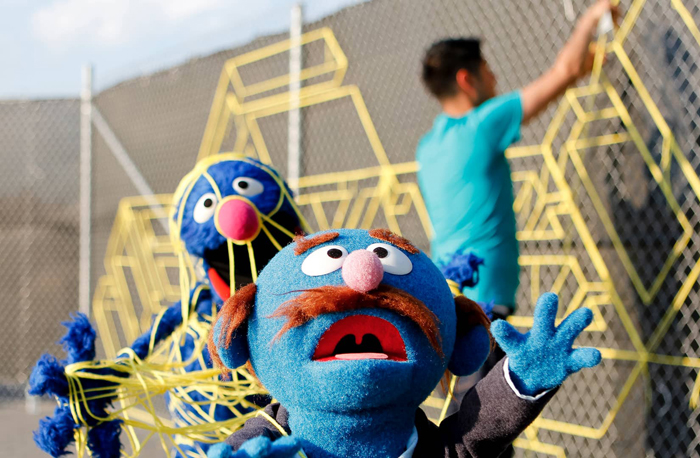
JE: Two years ago, you collaborated with Sesame Street to create a video to help promote their new website. In the video, you and beloved muppet Grover work together to create a yarn installation on the streets of NYC. Sesame Street often creates controversial content that pushes boundaries. Do you think that collaborating with them and having a larger audience understand your work will shine a light on how your art form is perceived?
HOTTEA: I believe artwork should be perceived differently by everyone. Even though I may not always agree with how people view my artwork, I believe that just makes it more interesting for me. I have always been the odd one out in every aspect of my life and if my artwork fit neatly into a certain category, something might be wrong.
JE: When you visit Minneapolis, what are some places you love to tag? Are there any recent projects that might still be around to view?
HOTTEA: I have an installation at HAUS, and that was actually my first hanging yarn installation. It was made somewhere around four or five years ago – but it’s still there.
As far as places I like to tag, I don’t really like that wording – what I’m doing I don’t really consider to be graffiti. I’m trying to do the opposite. Everything I do now in comparison to when I wrote graffiti is very different. I do all of my un-commissioned work during the day. I would have never even considered that as a graffiti writer. Doing graffiti, it was mostly about getting your name up and the style of letters you did it in. The work I do now is more about the surface or space it’s in and how my materials co-exist with them. As a graffiti writer, I was very secretive about what I did and didn’t tell my family or talk about it very much. My concept behind “HOTTEA” is to be completely vulnerable not only with the act of doing the work but also me as a person.
In terms of upcoming projects, there is a pedestrian walkway at 35W and 94 near downtown with great views of the skyline. I am going to create a performance/installation over the bridge with balloons (the balloons will be a gradient of color from one end of the bridge to the other) and people holding those balloons. When everyone is in place on the bridge with their respective color of balloons a small choreographed performance/dance will take place.
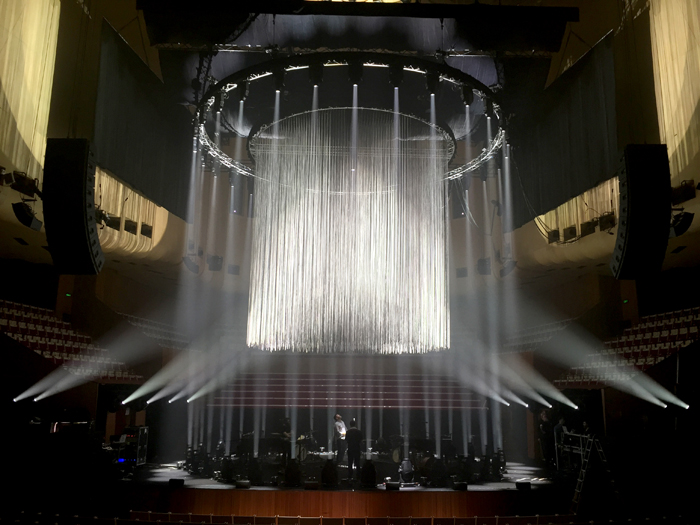 Actions, yarn installation at the Sydney Opera House, 2016
Actions, yarn installation at the Sydney Opera House, 2016
JE: Despite it being the complete antithesis of destruction, the graffiti nature of your work and its street elements still designate it as "vandalism" in the eyes of the law. In this way, so much of your work and who sees it is a race against time. What are the conceptual differences between the pieces you have done in a gallery setting - like your installation at HAUS - and designs you've created for Perrier (i.e. works that have the longevity of viewership) versus the projects designed in urban settings?
HOTTEA: Honestly, the only major conceptual difference is the space they are in. My work conceptually will always be about creating a lasting memory - much how I discovered yarn as my medium. It was a memory buried deep in my subconscious that surfaced when I was in a time of creative uncertainty. This memory was an everyday moment that helped me create something that I am very passionate about. Whether I am working on a commission indoors, for Perrier, or an un-commissioned installation on the street, I will always strive to create a positive lasting impression of that time and place.
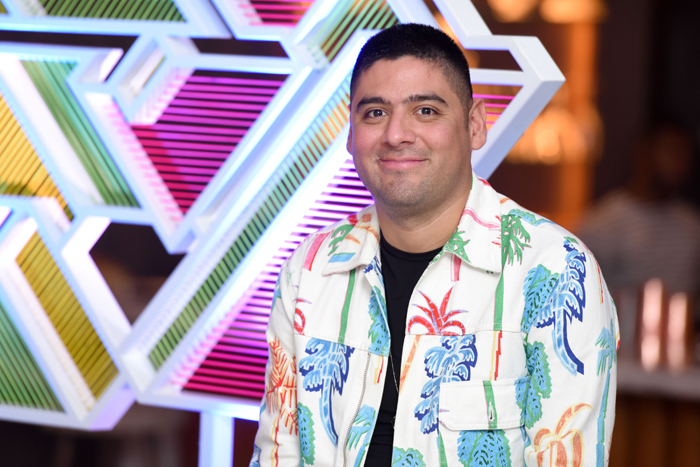 HOTTEA (aka Eric Rieger). Photo by Jared Siskin & Patrick McMullan.
HOTTEA (aka Eric Rieger). Photo by Jared Siskin & Patrick McMullan.
To see more of HOTTEA’s work, follow him on Instagram @hotxtea, and to learn more about Perrier’s collaborations with artists, visit ARTXTRA.
All photos courtesy of Perrier unless otherwise noted.
We can't do it without you.
Help keep independent arts journalism alive in the Twin Cities.
We can't do it without you.
Help keep independent arts journalism alive in the Twin Cities.